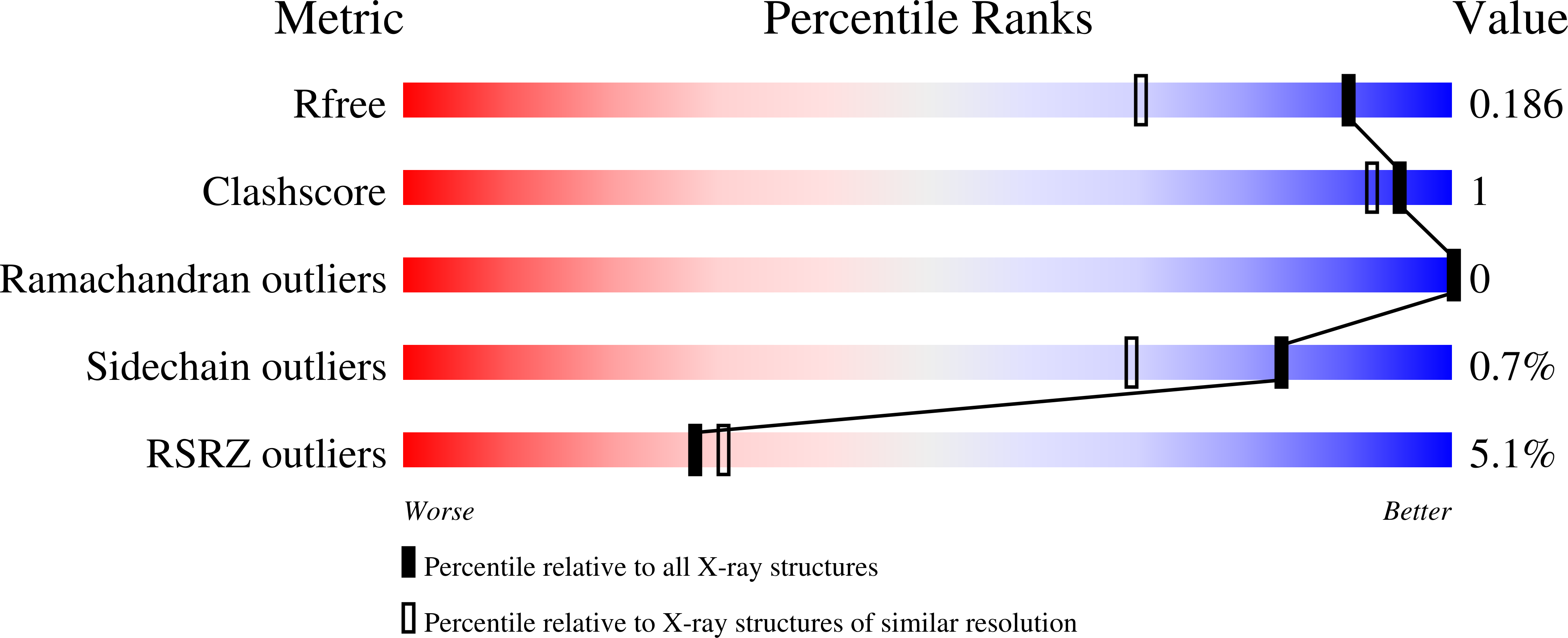Sensing of Bacterial Cyclic Dinucleotides by the Oxidoreductase RECON Promotes NF-kappa B Activation and Shapes a Proinflammatory Antibacterial State.
McFarland, A.P., Luo, S., Ahmed-Qadri, F., Zuck, M., Thayer, E.F., Goo, Y.A., Hybiske, K., Tong, L., Woodward, J.J.(2017) Immunity 46: 433-445
- PubMed: 28329705
- DOI: https://doi.org/10.1016/j.immuni.2017.02.014
- Primary Citation of Related Structures:
5UXF - PubMed Abstract:
Bacterial and host cyclic dinucleotides (cdNs) mediate cytosolic immune responses through the STING signaling pathway, although evidence suggests that alternative pathways exist. We used cdN-conjugated beads to biochemically isolate host receptors for bacterial cdNs, and we identified the oxidoreductase RECON. High-affinity cdN binding inhibited RECON enzyme activity by simultaneously blocking the substrate and cosubstrate sites, as revealed by structural analyses. During bacterial infection of macrophages, RECON antagonized STING activation by acting as a molecular sink for cdNs. Bacterial infection of hepatocytes, which do not express STING, revealed that RECON negatively regulates NF-κB activation. Loss of RECON activity, via genetic ablation or inhibition by cdNs, increased NF-κB activation and reduced bacterial survival, suggesting that cdN inhibition of RECON promotes a proinflammatory, antibacterial state that is distinct from the antiviral state associated with STING activation. Thus, RECON functions as a cytosolic sensor for bacterial cdNs, shaping inflammatory gene activation via its effects on STING and NF-κB.
Organizational Affiliation:
Department of Microbiology, University of Washington, Seattle, WA 98195, USA; Molecular and Cellular Biology Program, University of Washington, Seattle, WA 98195, USA.















